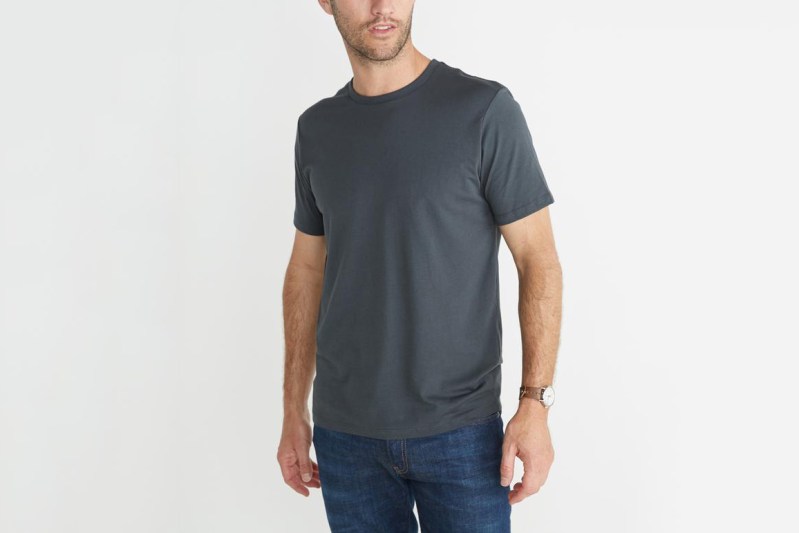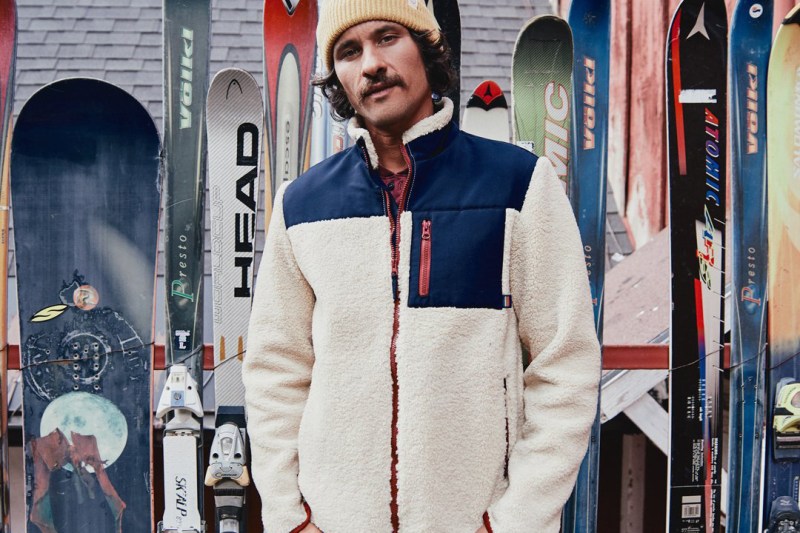Your girlfriend decided it was time to get into Marie Kondo and, for the sake of relational bliss, you went along. But then there was that T-shirt, the one that fit perfectly and was soft as a baby’s bottom. The one that embodied lazy weekends around the house and pick-up games with the guys. The one that your girlfriend finally commanded you to throw out.

Mike Natenshon found himself in this very situation and — for the sake of domestic bliss — tossed his beloved T-shirt. That, however, began the quest for the shirt’s consummate replacement and the birth of the Marine Layer
Sweet, Irreplaceable You
In 2009, as Natenshon started his quest, he quickly burned through the existing shirts on the market and realized that he was just going to have to do this himself. “I was working in finance, but really wanted a change,” he says. “I was looking for something more creative. I think there was also a stubborn element on my part that I needed to prove something, too. I certainly didn’t know a thing about pattern making, but I headed to Los Angeles to see if I could make something that would replace my old favorite shirt.”
Natenshon sought that soft, broken-in-from-day-one feeling, eventually settling on a fabric that blended Supima cotton, a super-soft (and strong) cotton that’s only grown in the United States, and Micromodal, a super-thin fiber made from beech trees that is also amazingly soft. The two together create an incredibly comfortable blend that’s still core to the shirts the brand carries today.

Natenshon was also looking for a more quantitative approach to fit. He points out that blazer or suit sizing is based on chest size, but that T-shirts, for the most part, just do four sizes, small through extra-large. “The buckets are too big,” he says. “I might have 100 shirts in my closet, but only five fit well. I wanted to do in-between sizes. I was always somewhere between a medium and a large, and I knew a lot of other people felt the same way.” Natenshon started working with a pattern maker to perfect the fit.
Shop Trooper
As the elements were coming together, Natenshon got some financing and started selling the first round of T-shirts out of his and his girlfriend’s — now wife’s — apartment. “My wife, Kelly, was a trooper,” Natenshon says. “She was a successful merchant at Williams Sonoma, so she brought some great practical knowledge to the table, and was really supportive through all of this.”
The shirts initially sold through word of mouth, but Natenshon soon realized it was time to take the business beyond his apartment. “This is when I convinced my best friend, Adam Lynch, to join us. I always thought the business would be online (we launched a year after Bonobos), but we did a pop-up shop on Chestnut Street in San Francisco in 2010.” he recalls, “It’s a very tactile product, so it’s important for customers to touch and feel it. We opened up with T-shirts and some polos. It was a real project, but we thought we’d just use it to grow our email list. It ended up being so successful that we signed a five-year lease on the space.” So successful, in fact, that Marine Layer only just moved its flagship right down the street earlier this year.

By 2011, Marine Layer launched its women’s collection. In 2012, the brand opened a second store in the city’s then up-trending Hayes Valley neighborhood. Marine Layer now has 42 brick-and-mortar locations, the latest (at press time) in Brooklyn, New York’s Williamsburg neighborhood. Lynch is now Marine Layer’s COO.
Reduce, Reuse, Respun
Natenshon is also proud to be making Marine Layer a leader in sustainability. “Well, this did start with my not wanting to throw away clothes,” points out Natenshon. “When we first started, we tried to figure out how to use scraps, so nothing went to waste. We tried making a jersey T-shirt bag … Adam kept it as a reminder because it was so ugly.”

Marine Layer continues to be as efficient as possible in its manufacturing processes; 75% of the brand’s current fabrics are made from sustainable materials and next year, the percentage will rise to 81%. Revisiting that symbolic old T-shirt, Marine Layer launched its Respun program earlier this year: Customers are invited to send in their old T-shirts, getting a $5 credit (up to $25) for every T-shirt given. The shirts are then broken down and turned back into fibers, blended with other fibers made from recycled plastic bottles, spun into yarns, and, ultimately, made into brand-new T-shirts. And hoodies. And sweatshirts. And knit shorts …
The brand also includes a sustainability report on its website that dives deep into its supply chain and practices, even encouraging customers to shop in-store rather than online to cut down on carbon emissions and packaging waste.
Past Perfect
True to Natenshon’s promise, the Marine Layer size range now includes small, medium, medium/large, large, large/extra-large, and extra-large. The collection includes a studied mix of materials to achieve ultimate comfort. It has, as Natenshon puts it, “A California reference … like clothes from an old family vacation.” Styles and graphics are retro, somewhat preppy … classic pieces that every guy (and woman, and kid) needs to have at the ready for the perfect weekend (or, if you’re really lucky, for the perfect workday).
The 2019 fall and winter capsule
Marine Layer is pretty evenly split between men’s and women’s clothes at this point, releasing up to 200 styles a season. The brand also just started its wholesale business, so you may find your old — er — new favorite T-shirt in a specialty or department store near you sometime soon.


